1、 WST 3 Weight Transmitter Product Features
1、Analog output 10 VDC, 20 mA, 0-20 or 4-20mA
2. Serial communication: RS-485, MODBUS RTU protocol
3. Fieldbus interface: Profibus DP (certified)
4. Tare weight, gross/net weight, and zero point function (power outage safety)
5. Internal Resolution> 8 million counts
6. Relay output (liquid level mode/set point mode)
7. Compact DIN rail installation
8. Compliant with CE standards - EMC and low voltage
2、 WST 3 Weight Transmitter Product Description
The WST 3 transmitter is a high-performance, DIN rail mounted instrument designed for strain gauge based sensor applications. They convert the input signal of the weighing sensor into highly stable analog and digital output signals, suitable for PC or PLC based control systems.
WST 3 transmitters are typically used in situations where local display is crucial for weight/force indication or front panel settings. The setup and calibration program can be easily completed using the front panel or using PC based deltaCOM software running under Windows 95/98/2000/NT4/ME/XP/Windows 7/Windows 8/Windows 10. All setting data can be stored in the host and quickly downloaded to another WST 3 replacement device through PC software delatCOM.
The device is equipped with two relay outputs with a response time of less than 20 ms, for high-precision, liquid level control applications.
The unique patented analog-to-digital converter with high resolution and stability is the heart of the transmitter. This advanced A/D driven analog and serial output can be configured by the user to transmit fast, accurate, and stable weight/force measurements.
The WST 3 transmitter uses the Profibus DP format to provide in vehicle fieldbus communication. Profibus DP, DeviceNet, and Modbus Plus versions of the fieldbus can also be obtained through BLH Noble's GATE 3S network module.
The WST 3 transmitter is compatible with other BLH Nobel instruments and communicates with the general process control host PC/PLC through the standard RS-485/MODBUS RTU protocol.
The transmitter has a CE mark and fully complies with EMC and low-voltage directives.
3、 Actual photo of WST 3 weight transmitter product
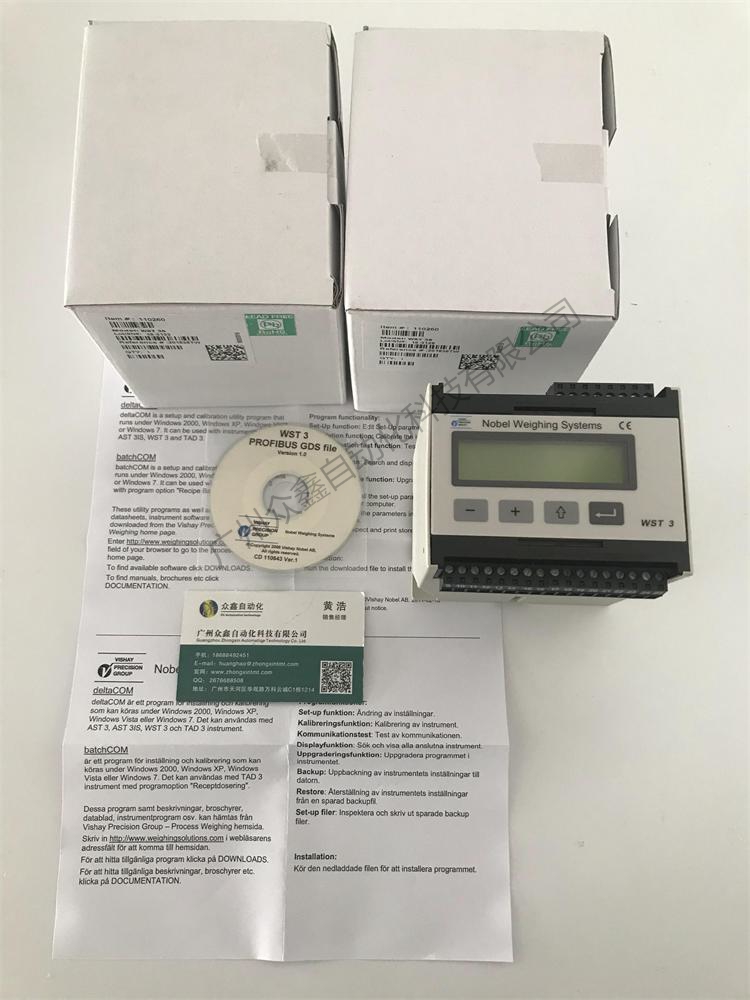
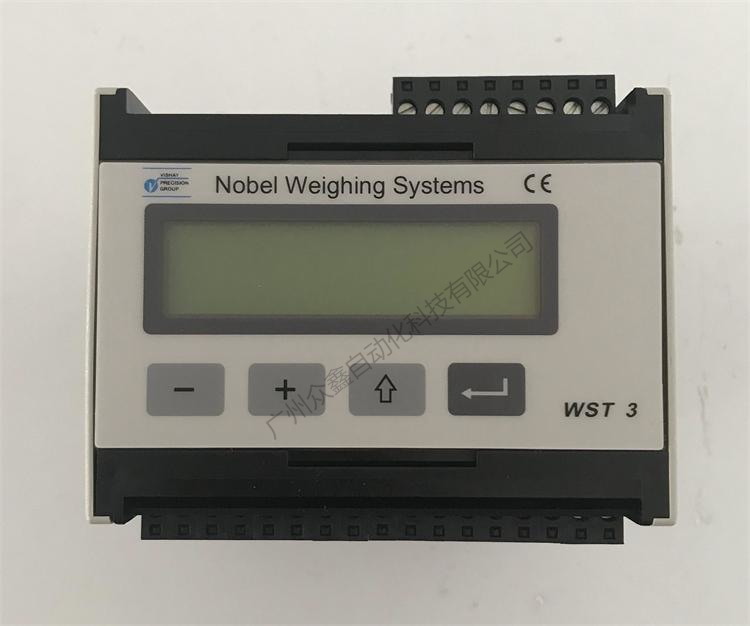
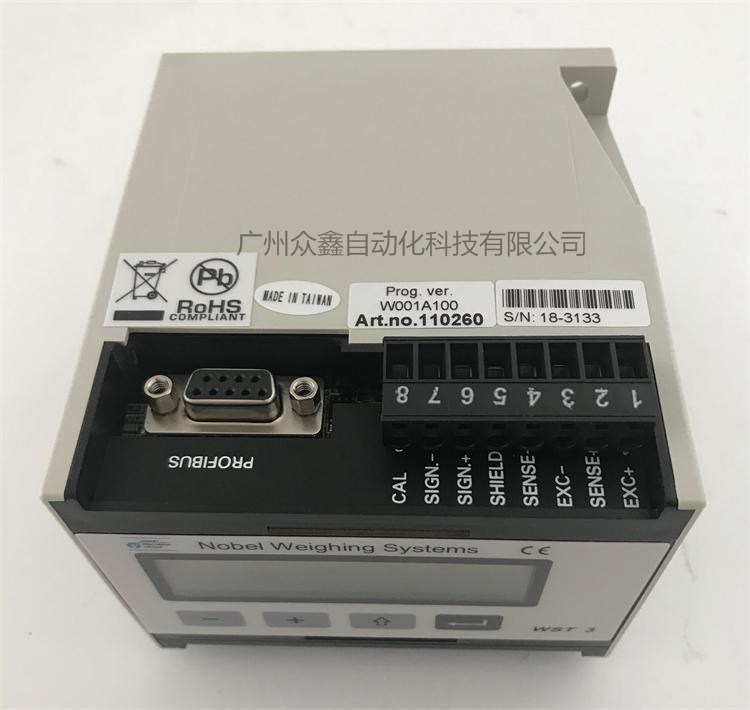
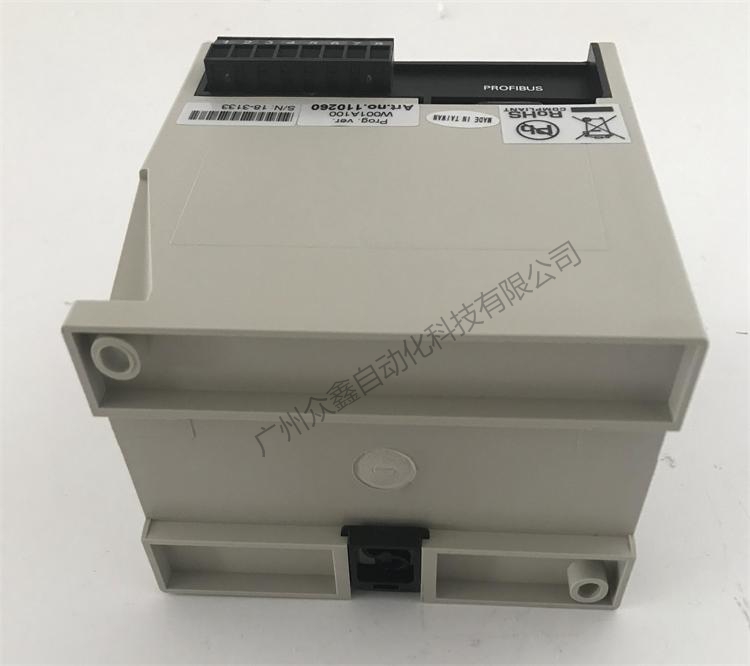
4、 WST 3 weight transmitter product dimensions
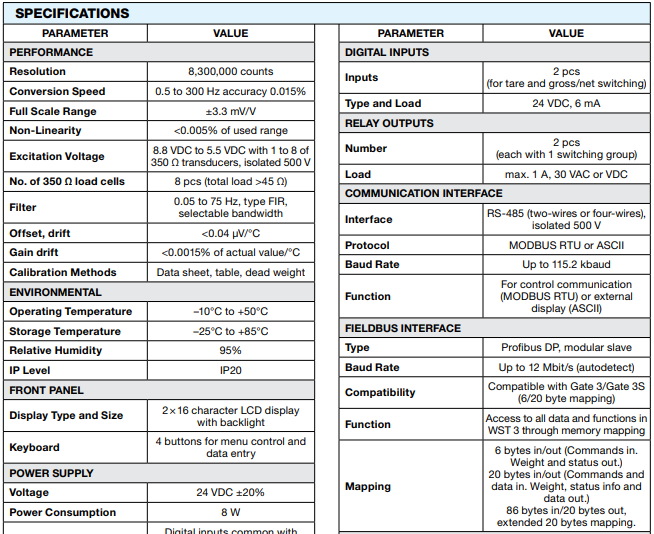
Extended Reading
Application and maintenance of weighing instruments Weighing instrumentAfter calibration, it can be put into use. During the application process, attention should be paid to the maintenance of the weighing instrument. The maintenance workload of weighing instruments is not significant, mainly by regularly checking the working condition of weighing instruments during inspections. The basic maintenance tasks include:
1. Regularly inspect and clean to avoid impurities accumulating on tanks, sensors, and junction boxes that may affect measurement;
2. To ensure that the tested container integrated with the top plate is floating and free from other mechanical contact or jamming phenomena;
3. Attention should be paid to changes in the mechanical structure of the tank, including changes in pipelines and equipment. Any changes in the mechanical structure of the tank may affect the accuracy of weighing;
4. Regularly check the limit bolts or connecting rods to ensure sufficient clearance is maintained to avoid the limit bolts from touching the upper roof during normal production;
5. Check whether the sensors, connectors, and limit devices are excessively worn, and replace them if worn;
6. Check whether the junction box is sealed and whether various wires are securely connected;
7. Whether there is moisture or foreign objects inside or around the junction box, whether there are strong electromagnetic interference devices added near the junction box and sensors, and whether there are new objects that generate high temperatures added;
8. Check if the instrument cable is damaged and fixed on the scale body;
9. Check if the scale body moves freely;
During use, there may be issues with inaccurate measurements. It is necessary to first check if there are any foreign objects relying on the weighing container pipeline or the pipeline above it, and if the limit bolts are touching before conducting other inspections.
On site, it is simple to determine whether the measurement is accurate. Sometimes, a person can be arranged to stand in the vicinity of several weighing sensors to see if the values displayed by the weighing controller are consistent and whether it is the person's weight. This method is simple and effective. If the data displayed on each sensor is inconsistent, it means there is an angle difference. It can be judged that the data measured by this weighing instrument when measuring a heavy object is inaccurate, and the height of each sensor needs to be adjusted to eliminate the difference. If there is no angular difference, but the displayed data is incorrect, the scale needs to be recalibrated. To determine whether the weighing body is working properly, you can also use your hand to briefly push the weighed container or can body to see if the displayed data has changed and returned to the value before the push. If the previous value cannot be restored, it indicates that there is a problem with the external mechanical connection of the weighing body, and there is external force supporting the tested container or tank body.
The above is the detailed information of BLH and WST 3 weighing instruments in the United States. If you have any questions about the prices, lead times, models, and inventory of BLH and WST 3 weighing instruments in the United States, please call 18520271262 to obtain the latest price details of BLH and WST 3 weighing instruments in the United States.

